 Yo La Tengo
Yo La Tengo
There’s a Riot Going On
Matador Records
March 2018
Yo La Tengo have always had a warmth to them uncommon among the indie bands they came up alongside in the 90s—whether playing noisy, garage rock, instrumental drone, or pure pop, they’ve always made songs of inviting intimacy. There’s a Riot Going On illustrates this better than anything before. Its songs unfurl slowly, and things never get loud or hooky, but Riot is captivating in its shimmery warmth.
On Riot, YLT leans into the ambient drone-y passages they’ve played with in the past; eschewing the direct, clear romanticism of favorites like “Autumn Sweater” or the orchestral indie rock found on Popular Songs for soft, minimal pieces that layer until they approach soundscapes more than rock songs. Texturally, it more often resembles Boards of Canada or Fennesz than Yo La Tengo’s obvious peers. It’s a long, blurry album, but never aimless. When gentle interruptions come, like melodic fuzz bass on “For You To” or jazzy polyrhythms on “Above the Sound” or “shoo-wop” harmonies on “Out of the Pool”, they carry extra weight and satisfaction, but they wouldn’t land so powerfully if not for the beautiful stillness around them.
Despite being like a cohesive, immersive hour of music, Riot was recorded in fragments, with a leave-the-recorder-on-and-we’ll-put-it-together-later approach in the vein of Can. It feels appropriately out of time, not dependent on larger world context, and outside of the increasing hectic-ness of life in 2018. It’s kind of the opposite of its namesake—the tense, urgent Sly & the Family Stone masterpiece. It’s a record of the intimacy and care we can give no matter what things are like outside. It’s a welcome feeling right now.
Listen to this: When you’re on a long drive and full of bittersweet thoughts about where your life has been and where it could go.
—Audrey Zee Whitesides
 Jamila Woods
Jamila Woods
HEAVN
Jagjaguwar
October 2017
Jamila Woods is a Chicago-raised poet and musician. Woods has appeared alongside Chance The Rapper in “Sunday Candy” and Macklemore and Ryan Lewis’s 2016 “White Privilege II.” Woods formed M&O and dropped two albums with the duo before working on her solo album, HEAVN.
The album hosts light, airy, and uplifting beats, but the lyrics are as intense as they are beautiful. In VRY BLK, Woods sings, “I’m very black, black, black, can’t send me back, back, back, you take my brother, brother, brother, I’ll fight back, back, back,” to the tempo of the nursery rhyme, “Miss Mary Mack.” The juxtaposition of a nursery rhyme being paired with lyrics about protection, murder, fear, and love is haunting.
Woods’ album shows that she is a combination of grace and guts. Her candid description of her life in all its complexities is a refreshing addition to the hip hop and R&B world. In this one album, Woods talks about being an alien, her grandfather’s Alzheimer’s, Black girl magic, and police brutality, to name a few.
HEAVN feels exactly how art and music should feel: honest.
Favorite track: “Holy”
Listen to this: When you wake up and want to feel empowered and beautiful.
—Jessica Lynn Perez
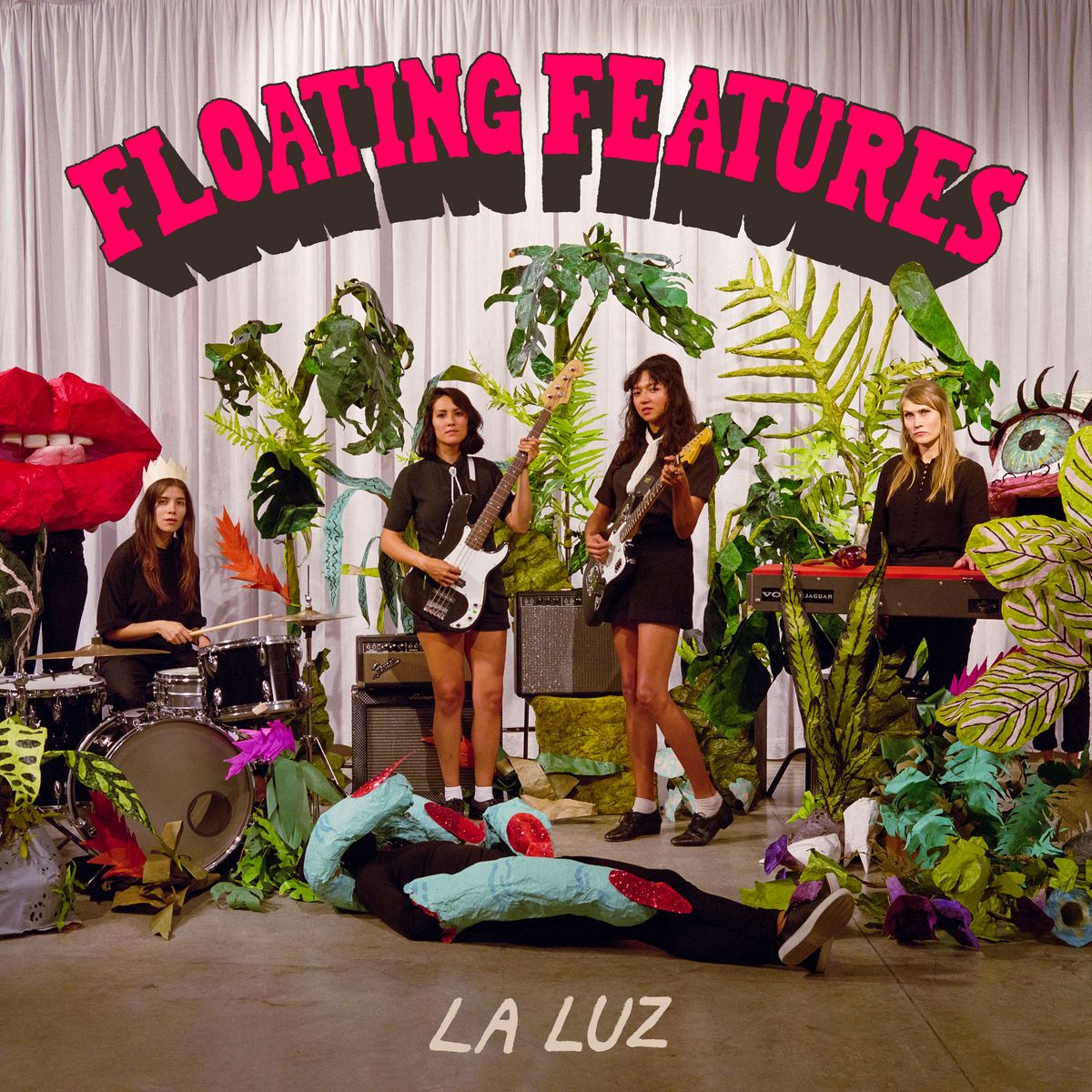 La Luz
La Luz
Hardly Art
Floating Features
May 2018
The Seattle natives of La Luz—now living under the beautiful, pink, sunset skies of Los Angeles—have finished their fourth studio album Floating Features. As the title would suggest, the album boasts dreamy guitar riffs, breathy vocals, and soft percussion. Listening to Floating Features feels a bit like you’ve spent all day on the beach drinking acid-spiked Kool-Aid.
The album opens with the title track “Floating Features.” This instrumental piece, with its heavy use of the fuzz pedal and organ, create an atmosphere dripping with Tarantino-sentiment.
There is a melancholy tone to the album that transcends depression. Even while singing “we’ll be broken until we die” in “Greed Machine,” there remains an undeniable presence of hope and acceptance. Like a meditation gone terribly wrong only to come back around full circle to be exactly right.
Favorite song: “Walking into the Sun”
Listen to this: Driving down the coast at sunset.
—Jessica Lynn Perez
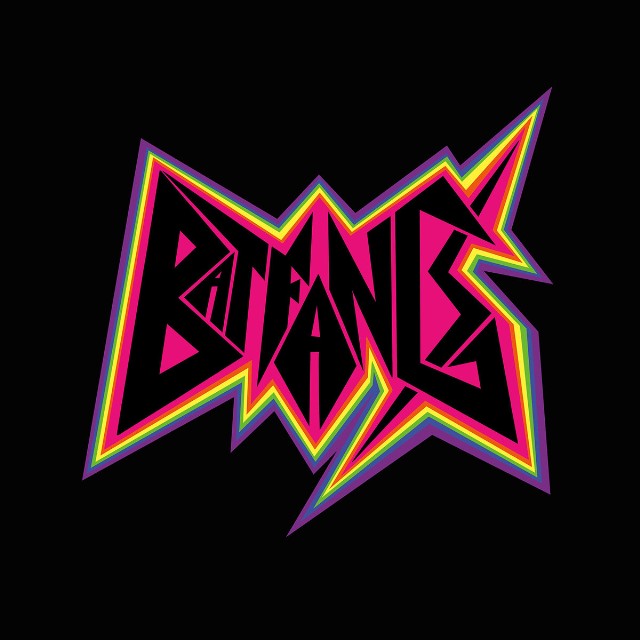 Bat Fangs
Bat Fangs
Bat Fangs
Don Giovanni Records
February 2018
Drummer Laura King and bass player Betsy Wright joined forces to produce and record their self-titled album at Candyland in Kentucky (owned by Mike Montgomery of Ampline). Bat Fangs plucks riffs you’ll remember from 30 years ago; it delivers imagery of Poison and early Bon Jovi. This is a vast difference for Wright and King, with Wright on hiatus from playing bass in Merge Records’ Ex Hex, and King the ex-drummer of Flesh Wounds and Cold Cream.
The band facetiously describes their music as “heady, heavy music for third eyes and stiff upper lips.” While its inspirations are thematically metal, and Wright’s riffs are inspired by early-80s glam metal bands like Warrant and Winger, Bat Fangs also seems to pull power from female singers like Patty Smyth, while consistently retaining a pop sentiment throughout that makes it a lasting, powerful debut album.
Listen to this: With a hairbrush microphone and a friend (extra points if you wear a vintage Bon Jovi shirt).
—Metta Pry
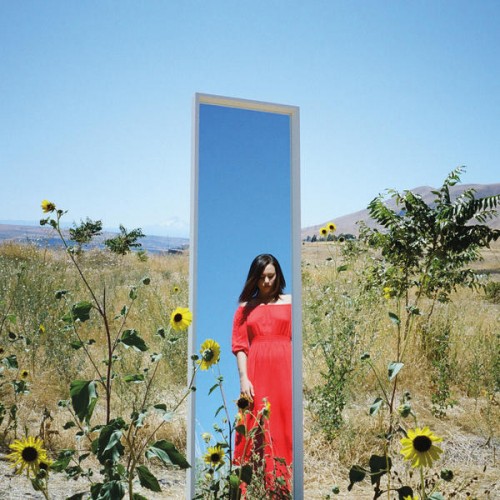 Many Rooms
Many Rooms
There Is A Presence Here
Other People Records
April 2018
Performing and recording under the name Many Rooms, Houston, TX-based Brianna Hunt pours her soul into her first full-length release. There Is A Presence Here is a starkly beautiful work of minimalism. Unapologetically personal, slow and meandering, the album feels like a warm wave cresting over the internal monologue of a jilted lover. Driven mainly by a somber, pulsing piano or a softly picked acoustic guitar, and almost always accompanied by atmospheric synths and delicately placed harmonies, Hunt manages to create a richly textured soundscape whose tonal character is far greater than the sum of its parts.
You won’t find much traditional verse/chorus/verse song structure on There Is A Presence Here. Instead, Hunt chooses to look at the big picture. As you listen to the album, top to bottom, tracks seem to weave into each other; growing from mournful dirges into majestic crescendos, and collapsing back on into themselves before the whole process is repeated. Standout songs include “Which Is To Say, Everything,” which expands from a delicate whisper into a powerful climax, and the profoundly intimate “The Nothing” that feels as though you’re overhearing a secret practice session in a sparse bedroom populated only by Hunt, her guitar, and a mess of handwritten lyric sheets spread out on the floor.
Despite the lack of grandiose instrumentation, There Is A Presence Here is full and lush. Take your time, slow down, and get on its ethereal wavelength. You’ll be rewarded with a truly unique and interesting experience.
Listen to this: with raindrops from a summer thunderstorm peppering the ground outside your window.
—Stephen Otto Perry
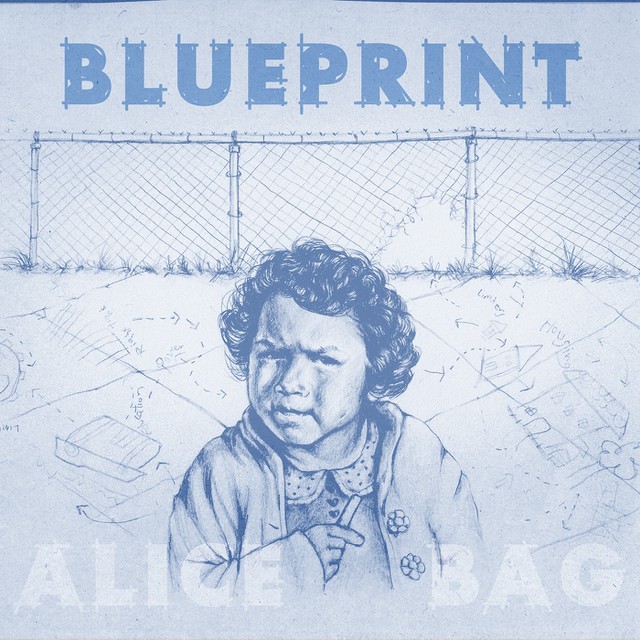 Alice Bag
Alice Bag
Blueprint
Don Giovanni Records
March 2018
Alice Bag is the Latina, punk rock, feminist, bad-ass from the mid-70s LA punk band, The Bags. From the very beginning, Bag has been a force to be reckoned with. Her stage presence and vocals visibly match her persona in Penelope Spheeris’ documentary, The Decline of Western Civilization. And with similar political and social issues occurring in our current political climate, Bag has yet again taken the stage. With her second album, Blueprint, she collaborates with other feminist heavy hitters like Kathleen Hanna (Bikini Kill, Julie Ruin). The multiple vocals on “77” chant “It’s time!” It rings with the unity of women to make change for equal pay. Bag also collaborates with two more strong women— Allison Wolfe (Bratmobile, Sex Stains) and wild child Teri Gender Bender (Le Bucherettes). Bag states that working with talented women inspire her and push her to work harder in her creativity. She also collaborates with the loud and proud, Latino, and queer Martin Sorrondeguy, who is a punk staple from Los Crudos and Limp Wrist.
In the song “Se Cree Joven” the Spanish-pop melody addresses ageism, making a point that there is no expiration on the punk life, one can dress and be who they want regardless of age. Discrimination is discrimination in any form. “Asi me siento bien!” The theme for the album is refocusing on a personal level and making changes to result in a better self and environment.
Listen to: When facing a #MeToo moment.
—Carolina Enriquez Swan
 Standup for Drummers
Standup for Drummers
Starring Fred Armisen
Netflix Original
February 2018
Although you may already be familiar with Fred Armisen as a comedian and writer for Saturday Night Live and Portlandia, before his time in front of the camera, he spent several years behind the kit touring with Trenchmouth.
Armisen, who has written articles for Tom Tom and has interviewed drummers for Tom Tom TV, has just put out a new special on Netflix aptly titled, Standup for Drummers. And that’s exactly what it is—in his trademark nerdy and quirky style, he cracks jokes that only drummers will get; like how it’s awkward to walk back around the hi-hat stand, and how sometimes guitarists can’t find the 1 in the beat (love you, guitarists!).
The special begins with the camera panning over the outside of the club with eager fans lined up in front of a sign declaring “Drummers Only.” It even shows some of them demonstrating their stick prowess on a drum pad on their way in. Maybe there was a secret rudiment they needed to know in order to get in?
Armisen doesn’t just stand there telling jokes though—he gets a little help from his friends like Sheila E., Tré Cool, Clem Burke, and Stella Mozgawa to demonstrate the different experiences drummers have and ways to collaborate with other musicians—even if it’s just to make fun of another band in your scene. In another memorable bit, Armisen showcases different kits starting with one from the 1930s and working his way up to present-day set ups.
He uses his time onstage to uplift the drummers in the audience, reassuring them, “you’re just better than everybody else” when you walk through the airport carrying your snare.
While this might not be fun to watch with someone who is not a drummer or a musician, Fred just really gets us, you know?
—Rebecca DeRosa
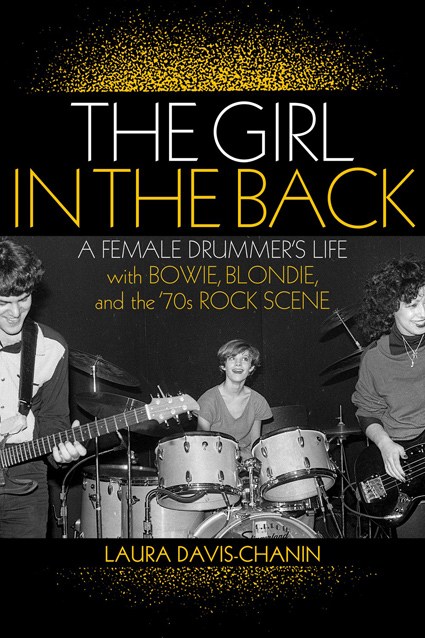 The Girl in the Back: A Female Drummer’s Life with Bowie, Blondie, and the ’70s Rock Scene
The Girl in the Back: A Female Drummer’s Life with Bowie, Blondie, and the ’70s Rock Scene
Laura Davis-Chanin
Backbeat Books
May 2018
There are several memoirs and accounts of the early punk scene in New York and London, and this does not disappoint. While Laura Davis-Chanin might not be a household name, she was in the crowd and then onstage at Max’s Kansas City CBGB’s, and the Palladium with her band, the Student Teachers, riding the punk explosion in the 70s. She is a keen observer who draws you into her corner of the scene where teenage rebellion, sex, drugs, rocky relationships, and music reigned freely.
When she was just a high school student, she fell in love with punk and new wave, and began following bands like the Mumps and the Erasers. Thoroughly inspired, she and her best friend Bill Arning decided to start a band and recruited other young musicians to join them. With Lori Reese on the bass, they had a female rhythm section which Davis-Chanin said made them stand out at the time.
Their pop sensibilities attracted the attention of Jimmy Destri, keyboardist and synth player for the band Blondie, which had had recent success with the album Parallel Lines. He offered to produce a single for the Student Teachers, and in the process, Destri and Davis-Chanin struck up a love affair that lasted a few years. They even wrote a couple songs together that Blondie recorded.
To her amazement, she began to rub elbows with David Bowie, Iggy Pop, Debbie Harry, and other notable figures of that era. Bowie saw something in the Student Teachers, even going to their band rehearsalS and tweaking some of their parts, and helping them in other behind-the-scenes ways.
But a wrench was thrown into Davis-Chanin’s fledgeling career as a musician when she was diagnosed with multiple sclerosis at the age of 18. On doctor’s orders, she hung up her sticks and later pursued careers in law and writing.
Multiple sclerosis may have taken Davis-Chanin away from the kit, but it hasn’t stopped her from creating. She is currently working on a novel entitled A Finished Noise and a book with Michael Alago, the former Elektra Records executive responsible for introducing Metallica to the world in the 80s. She also co-hosts “Phi Fic,” a podcast on fiction for The Partially Examined Life Network.
—Rebecca DeRosa
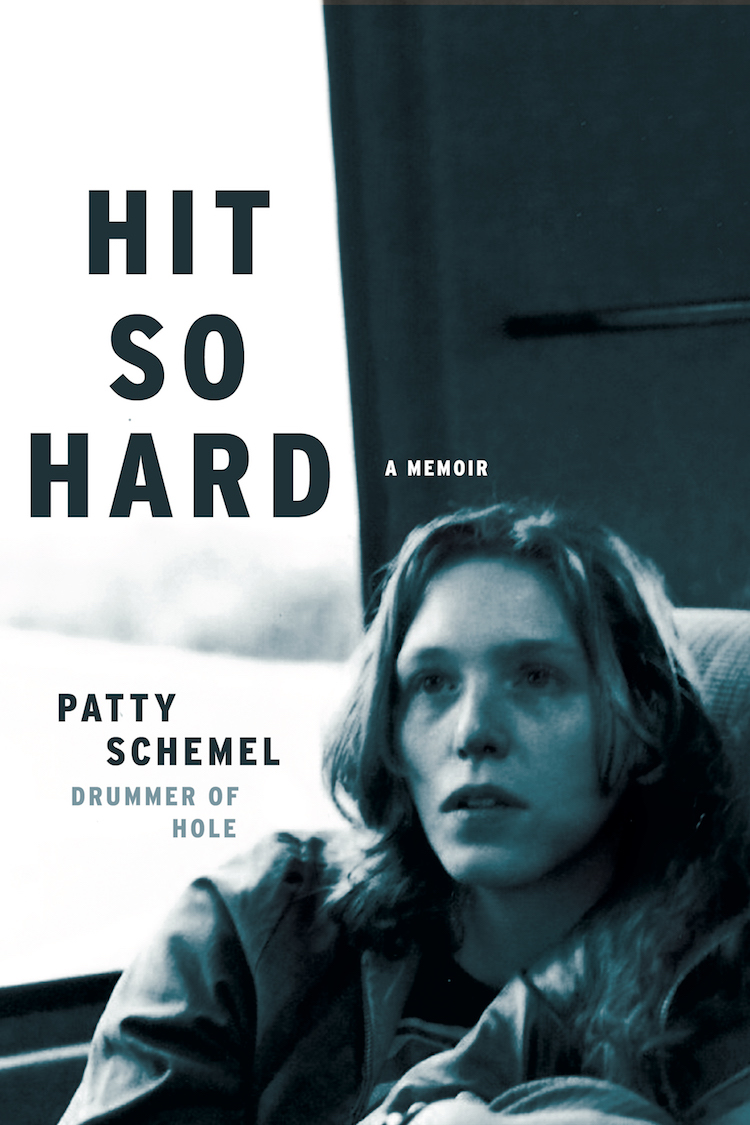 Hit So Hard: A Memoir
Hit So Hard: A Memoir
Patty Schemel
Da Capo Press
October 2017
Patty Schemel was once described by Kurt Cobain as the “best musician” in Hole and indeed, she was. Bringing power and poise to her role as the hard hitting, no-nonsense drummer of the band during their epic rise following Live Through This, she helped to define the sonic power of that landmark album and of that era. Flash forward 23 years and she has had a long career drumming with not just Hole, but touring with bands like Imperial Teen, Juliette and the Licks, and most recently the band Upset. And now Schemel has just released her memoir, Hit So Hard.
The book follows the 2012 documentary film also titled Hit So Hard, and is an even more intimate look at the woman behind the drum kit. While she speaks of many events of her life, it is closely linked to the trajectory of Hole; it would be impossible to separate the two in the narrative. She recounts her early life and teen years in the pre-grunge boom days of 1980s Seattle, to meeting Courtney Love for the first time during her audition for Hole in 1992, to working on the iconic album that truly etched the band’s place in rock history.
As the story of Hole and Schemel’s career unfolds, she also explores her experiences with a growing addiction to heroin amid the chaos of life on the road with Courtney Love and being within the rock diva’s inner circle. Drugs were also her way to cope with the dual tragedy of the deaths of her close friends Kurt Cobain and Hole bassist Kristen Pfaff within months of each other in 1994. The 1994 Reading Festival, 1995 VMAs, and Hole’s MTV Unplugged appearance amid others serve as anchor points for the story.
Fans will remember a number of these events as watershed moments in 90s history and culture—but we tend to forget that these things happened to real people who were dealing with huge pressure from the industry; as their lives were increasingly spiraling out of control, the media was busy salivating for more “Courtney drama.” It is easy to overlook that they were not just MTV fodder or pictures to be flipped through in the pages of a glossy music magazine. She humanizes this time for us and brings it out of the abstract with poignant detail.
In telling her story, Schemel does not hold anything back. It is raw and real every step of the way. She candidly speaks of the aftermath of being fired from Hole and how deeply out of control her life became, surrounded not only by drugs and alcohol, but toxic people who helped fuel and enable her. Within a year of being out of the band, Schemel found herself addicted to not only heroin, but also crack cocaine, while living on the street and working as a prostitute to feed her habit. She was as far from screaming fans and TV cameras as one could get.
Through it all, she is open about everything, describing points in her life where she didn’t care about her previous rock star status or anything much at all, and just wanted to stay mired in a life of needles and crack pipes. The harrowing struggle to get clean by going in and out of detox and rehab more than a dozen times is described in gut wrenching passages. It is clear not even Schemel herself believed at that time she could ever escape her demons.
But she did escape them; she did find a way out. A final trip to rehab in 2005—one she said she was not sure would work—was the beginning of a new life. As open as she is about her struggles through despair, she is equally as engaging when writing about her newfound freedom from substance abuse and how that radically transformed her life. In the period after achieving sobriety she continued to play music, but she also discovered a love of working with dogs—which she also attributes to helping her stay sober—and opened her own business, as well as met her future wife and became a mother a few years later. Her love for her family is palpable in the way she describes her life with them and how it means everything to her.
Hit So Hard is a story of a rock star, yes. And she recounts an amazing, intense, frenzied, and magical time in the musical landscape, a golden age we aren’t likely to ever see repeated. It is the story of incredibly influential talent. A story of pain, loss, and struggle. But more than any of those things, it is the story of triumph and the will to survive the dark experiences of the human condition. And the payoff of living through it to find a whole new life waiting on the other side.
—Kate Hoos


